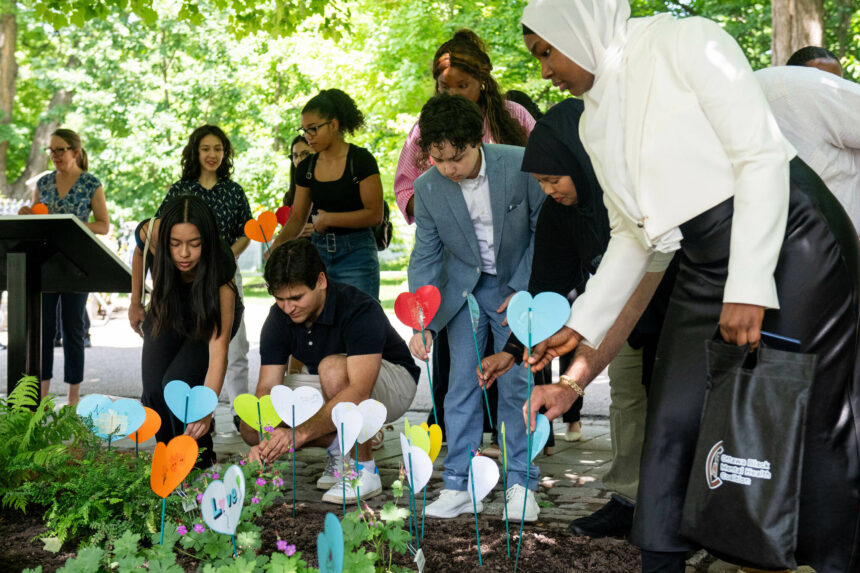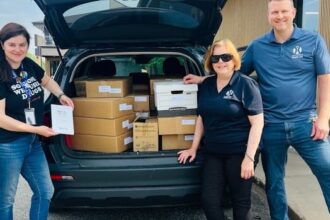The thunderous beat of traditional drums echoed across The Forks in Winnipeg yesterday as thousands gathered to commemorate National Indigenous Peoples Day 2025, marking a powerful celebration of cultural resilience and heritage that continues to flourish despite centuries of attempted erasure.
“This isn’t just a celebration—it’s a testament to our survival,” said Elder Margaret Clearwater, who opened the ceremony with a prayer in Anishinaabemowin. “Every song, every dance, every word in our languages represents generations who fought to preserve who we are.”
The June 21 celebration, coinciding with the summer solstice, saw record attendance this year across Canada as First Nations, Métis, and Inuit communities showcased their distinct traditions. In Winnipeg, over 5,000 people participated in the day-long event featuring traditional food, crafts, storytelling, and performances that highlighted the rich diversity of Indigenous cultures.
Manitoba’s celebration holds particular significance this year following the provincial government’s recent commitment to implement all 94 Calls to Action from the Truth and Reconciliation Commission. Premier Adam Thompson, who attended the celebration, acknowledged the province’s obligations toward meaningful reconciliation.
“We recognize that true reconciliation requires more than words—it demands concrete action and fundamental change in how we relate to Indigenous peoples,” Thompson told the crowd. “Today we celebrate not only the cultures and contributions of First Nations, but recommit ourselves to the ongoing work of justice.”
The event highlighted achievements within Indigenous communities while acknowledging ongoing challenges. Recent Statistics Canada data shows Indigenous youth unemployment remains nearly double the national average at 18.7%, while access to clean drinking water continues to be a struggle for 31 First Nations communities across the country.
David Meeches, Chief of Long Plain First Nation, emphasized that cultural celebration and political advocacy must go hand-in-hand. “Our dances and songs strengthen us for the fights that continue in courtrooms and legislatures,” he said. “Cultural resurgence and political sovereignty are inseparable.”
For many attendees, the day provided an opportunity to connect with traditions that residential schools and assimilation policies attempted to eradicate. Twenty-seven-year-old Melanie Courchene brought her children to witness jingle dress dancing for the first time.
“My grandmother wasn’t allowed to practice these traditions,” Courchene explained. “Now my children are learning our language and dances from birth. That’s how we heal intergenerational trauma—by reclaiming who we are.”
The celebration included a particular focus on Indigenous languages, with workshops offering introductions to Cree, Ojibwe, Dakota, and Michif. The emphasis on language preservation comes as UNESCO reports that 75% of Indigenous languages in Canada are considered endangered.
Economic development was also showcased through an Indigenous entrepreneurs’ marketplace featuring over 40 Indigenous-owned businesses. Recent research from the Canadian Council for Aboriginal Business indicates Indigenous entrepreneurship has grown by 23% since 2020, representing one of the fastest-growing business sectors in Canada.
As the sun set on the celebration, a round dance brought together Indigenous and non-Indigenous participants in a circle symbolizing unity and shared humanity. The powerful imagery served as a reminder that while National Indigenous Peoples Day occurs once yearly, the work of reconciliation and cultural revitalization continues daily in communities across the country.
As Canada approaches its 160th anniversary, the question remains: can a nation built on colonial foundations truly transform its relationship with the original peoples of this land, or will celebrations like Indigenous Peoples Day remain symbolic gestures rather than markers of fundamental change?


















